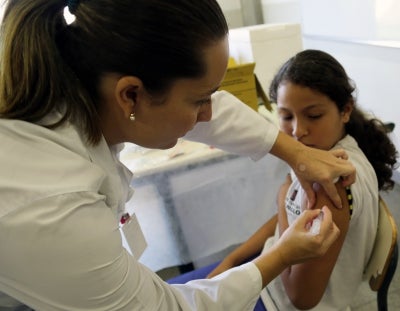Brazil

Key country characteristics
- Upper-Middle Income, Portugese speaking country in Latin America & the Caribbean
- Population: 211M
- GDP Per Capita: $15.3K
- Life expectancy at birth: 75


Since the mid-1980s, Brazil has focused on strengthening primary health care as a means of promoting and ensuring access to health services for its entire population1. The Family Health Program (FHP) aims to provide coordinated, comprehensive, and continuous care through multidisciplinary primary health care teams1. The program creates wellness by reorienting the health care system from treating patients with the disease to delivering comprehensive care and preventing disease. Reflecting this fundamental shift in priorities, FHP activities include active health promotion and disease prevention as core components of primary health care. The FHP also redistributed the responsibility of ensuring effective care delivery to municipalities instead of states. This decentralization of power allows for greater accountability, more collaboration between the private and public sectors, and more efficient resource allocation2.
A core component of the FHP was the strengthening of Brazil's primary health care workforce through the creation of multidisciplinary Family Health Teams (FHT)."
The FHT provides comprehensive and continuous primary health care to a defined panel of patients and families, bypassing the constraints of facility-based care through the integration of active community-based services.
The Brazilian model utilizes “empanelment,” a process of assigning patients to a primary health care team, as a core strategy for delivering quality care. Every individual within the FHP is assigned to a Family Health Team, and each FHT is responsible for providing services for up to 1,000 families (~4,000 individuals) located in a specific geographical area. This geographic empanelment has helped to prevent gaps in population coverage and overlap between FHTs9. Continuity of care is also achieved as each FHT serves each patient over time8.
The Family Health Teams include a physician, nurse, and four to six community health agents to address needs that span from community to facility and from prevention and surveillance to medical treatment. In coordination with the basic clinical staff in the FHT, separate primary health care support teams provide additional care to empanelled populations. These support teams can include nutritionists, social workers, psychologists, obstetricians and gynaecologists, and public health workers3. Since 2000, Brazil has recruited 250,000 CHAs and 30,000 family physicians who form the core of the 29,000 FHTs now in service4. Many of these physicians had to be hired from abroad to address the country’s massive shortage of doctors and health care professionals5.
Community health agents (CHAs) play critical roles as key members of the FHTs. CHAs are recruited from the facilities in which they reside and complete up to three months of training by the municipality5. CHAs focus on primary and secondary prevention including promotion of a healthy lifestyle and health education, and early detection screening programs for hypertension, diabetes, and other prevalent conditions3. CHAs also serve as the first point of access for services, connecting patients to needed preventative and curative treatment.
Within an FHT, each CHA is assigned to a small “micro-area” that includes approximately 150 families4. Agents visit the homes of each family in their micro-area monthly, even if the family has not reported any health concerns6. During these visits, CHAs provide basic preventative care including screening for common conditions like diabetes and hypertension, promotion of treatment adherence, and health education tailored to the needs of the family34. Additionally, CHAs collect vital data, such as marriages, births, deaths, and disease incidence3.
CHAs identify and then refer high-risk patients to the clinical team for treatment and then coordinate with clinicians to ensure that patients adhere to the treatment, attend follow-up appointments, and complete rehabilitation78. Clinicians generally include a doctor, nurse, and medical assistant. The agents and clinicians collaborate to ensure care coordination and disease management for patients7. For example, if a patient is recommended exercise to treat a chronic condition, the CHA develops strategies for the patient to incorporate exercise into their lifestyle and stay motivated. Because CHAs live in the same communities where they work, they often form strong relationships with the families they serve.
This connection enables the agent to look beyond medical diagnosis and promote holistic health and wellbeing. CHAs connect families to social welfare prgrams to address barriers to health and healthcare access and overall well-being."
For example, agents can refer families to conditional cash transfer programs, welfare organizations, and other social services for issues such as housing or domestic violence3.
The CHAs also perform disease surveillance, which enables them to better treat individuals in their micro-area as well as understand the needs of their micro-area as a whole. In a systematic manner, CHAs seek to identify and record new incidences of illness and disease so that public health and primary care services can be tailored to the needs of the population. This system is a vast improvement from the passive reporting system in place before the FHP.4

Photo: PAHO/Creative Commons
The Family Health Program, with FHTs at its core, is widely considered to be a successful and cost-effective reform; in its entirety, the program costs USD31-51 per person per year. This model of multidisciplinary FHT has improved the accessibility, comprehensiveness, and continuity of care for Brazilians1011. The wide range of services offered by the team promotes prevention and well-being and has resulted in a dramatic shift in the way that Brazilians interact with the primary health care delivery system. From 1998 to 2014, coverage of the FHP increased from 4 percent to 64 percent of the population3.
However, the FHP has been slow to operationalize in the large urban centres of Brazil where most of the uncovered population lives39. In order to expand coverage of FHP, Brazil will need to overcome a persistent shortage of well-trained health care workers. Additionally, the FHP still struggles with the communication and referral processes needed to vertically integrate primary, secondary, and tertiary health services34.
Despite its challenges in reaching scale in urban areas, the model has been effective in addressing health disparities, with the most dramatic improvements seen in the poorest municipalities38131416. Overall, FHP has led to substantial improvements in service coverage and health outcomes in the last 20 years: